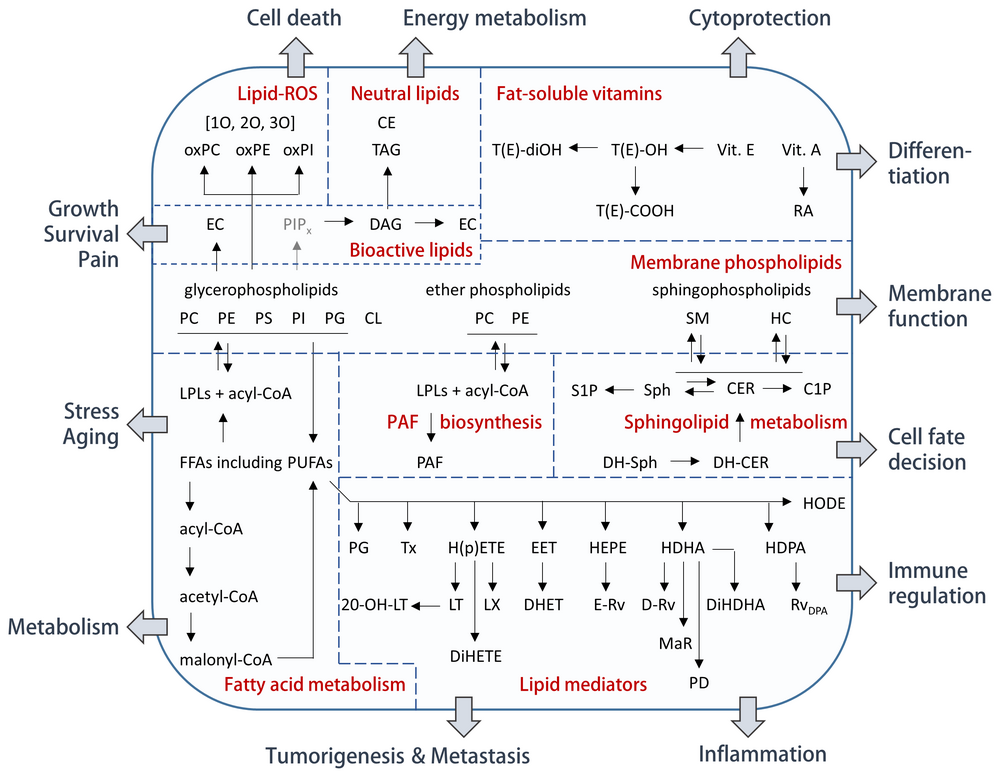Functional (redox)lipidomics
Lipid diversity
Cells contain tens of thousands of different lipids with pleiotropic functions that we are only beginning to understand. Lipids provide structure and energy to the cell, but they also act as hormone-like signaling molecules, either by influencing membrane properties or by interacting with biomolecules.
Pharmacological interest in lipids
Bioactive lipids are involved in the initiation and progression of various diseases. Prostaglandins, for example, mediate the classical symptoms of inflammation, such as redness, swelling, fever, and pain. While the number of studies attributing physiological functions to specific lipid species is increasing, the vast majority of lipids remain enigmatic in their bioactivities. Given this largely unexplored field, we expect that strategies that specifically target lipid profiles will have high therapeutic potential, not only in the context of inflammation.
Mass spectrometric (redox) lipid analytics
How to study lipid diversity? The key technology behind is mass spectrometric lipidomics. Our targeted lipidomics approach is based on ultraperformance liquid chromatography, differential ion mobility spectrometry and QTRAP tandem mass spectrometry and addresses more than 900 lipids from different classes, including (oxidized) phospholipids, neutral lipids, fatty acids and lipid mediators.
Lipid class | Subclasses | Number |
Phospholipids (PL) |
| 275 |
Oxidized phospholipids |
| 54 |
Lysophospholipids (LPL) | 58 | |
Ether phospholipids | 30 | |
Sphingolipids (SL) |
| 108 |
Acylglycerols |
| 207 |
Free cholesterol | 1 | |
Cholesteryl ester |
| 22 |
Free fatty acids | 28 | |
Acyl-CoA |
| 25 |
Lipid Mediators and Endocannabinoids |
| 80 |
Long-chain metabolites of vitamin E | 34 | |
Platelet-activating factor (PAF) | 1 |
From functional lipidomics to novel pharmacological strategies
We combine modern UPLC-MS/MS-based lipid analytics with a broad spectrum of biochemical, cell biological and molecular pharmacological methods to identify bioactive lipids and to investigate their role in disease-related cellular processes.
We aim to:
- identify novel bioactive lipids
- elucidate the underlying biosynthetic pathways
- reveal their signal transduction
- explore their pharmacological potential
